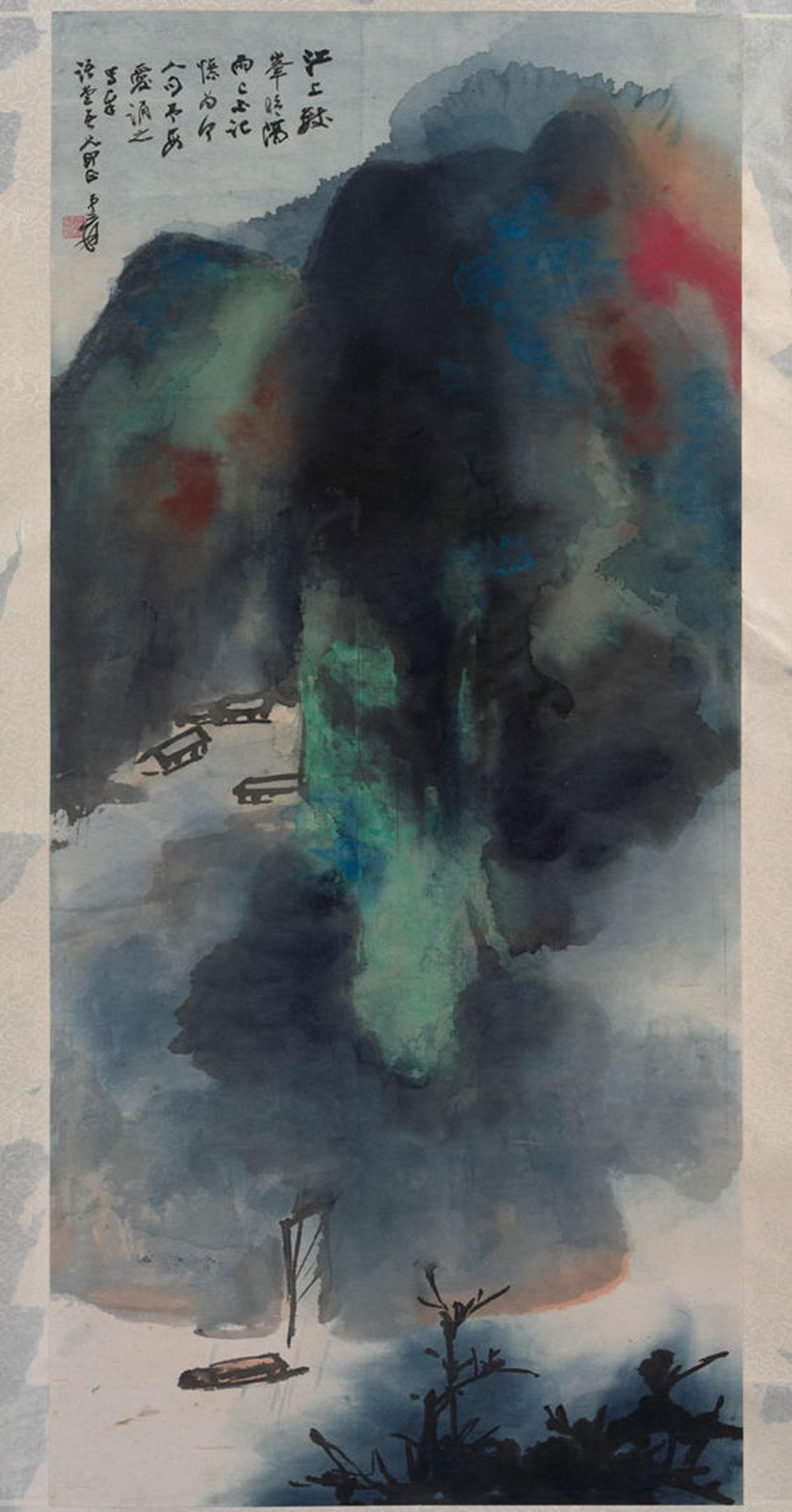
Fig. 1. Zhang Daqian (Chinese, 1899–1983). Mountains Clearing after Rain, ca. 1965–70. China. Hanging scroll, ink and color on paper; image: 36 1/2 x 16 7/8 in. (92.7 x 42.9 cm). The Metropolitan Museum of Art, New York, The Lin Yutang Family Collection, Gift of Hsiang Ju Lin in memory of Taiyi Lin Lai, 2005 (2005.510.5)
«The Metropolitan Museum's collection of Chinese painting and calligraphy, one of the finest outside China in both quality and scope, is largely built upon the acquisition of a few private collections. The nearly three hundred works that entered the Museum from the collections of C. C. Wang (1907–2003), the Edward Elliot Family, and John M. Crawford, Jr. (1913–88) in the 1970s and 1980s include several of the most important extant Song (960–1279) and Yuan (1271–1368) pieces today. Spanning the period from the eleventh to the nineteenth century, these works form the core of the department's painting and calligraphy collection from dynastic China.»
The late nineteenth and twentieth century remained a conspicuous void in our holdings until Robert H. Ellsworth (1929–2014) presented a gift of about four hundred and fifty paintings in 1986. It was strengthened by another gift of forty-one works from the Lin Yutang Family Collection in 2005. Though much smaller in size, the latter is unique in that the bulk of it can be personally related to the original owners, the renowned writers Lin Yutang (1895–1976) and his daughter Lin Taiyi (1926–2003) with her husband Li Ming (Richard M. Lai, 1920–2011).

Fig. 2. Lin Yutang (Chinese, 1895–1976). The Pond-Bamboo Dwelling, dated 1958. China. Album leaf, ink on paper; mounted: 13 7/8 x 29 7/16 in. (35.2 x 74.8 cm). The Metropolitan Museum of Art, New York, The Lin Yutang Family Collection, Gift of Richard M. Lai, Jill Lai Miller, and Larry C. Y. Lai in memory of Taiyi Lin Lai, 2005 (2005.509.17)
Lin Yutang is widely considered the most influential interpreter of Chinese culture for the West in the first half of the twentieth century (as China entered its republic phase). At the invitation of Pearl Buck (1892–1973), a Nobel Prize laureate celebrated for her epic novels on Chinese peasant life in the 1930s, Lin brought his family from Shanghai to New York for a visit in 1936. The previous year, Buck's husband Richard J. Walsh had published Lin's first book in English, My Country and My People. The book went through seven printings within four months and was translated into several European languages, and Lin acquired an international reputation almost overnight. In December 1937, his third book, The Importance of Living, was selected for special recommendation by the Book of the Month Club and stayed at the top of the New York Times Best Seller List for fifty-two weeks. The best-sold book in the United States in 1938, it was translated into a dozen foreign languages, confirming Lin's status as a world-class writer. He was nominated for the Nobel Prize in literature in 1940 and again in 1950.
The outbreak of the Sino-Japanese war in 1937 prevented the Lins from returning home, and they wound up staying in New York for three decades. Lin Yutang was interested in traditional Chinese painting and practiced calligraphy. Twenty works in the Lin Yutang family gift are directly related to him, including his four calligraphies for his daughters and son-in-law (fig. 2) and two late Qing (1644–1911) paintings that he purchased back in Shanghai in the 1930s. An unofficial cultural ambassador, he drew several leading contemporary Chinese artists to his circle, and fourteen works attest to their friendship. Among them is an exquisite group from the flamboyant artist-collector Zhang Daqian (1899–1983), whose meeting with Pablo Picasso in Nice, France, in 1956 made international headlines. Lin first met Zhang in Chengdu, Sichuan, in late 1943 during the Sino-Japanese War. The two became acquainted at dinner parties in New York in 1963, but it was not until the summer of 1965, when Zhang left his home in Brazil for New York for a physical examination, that their friendship blossomed.
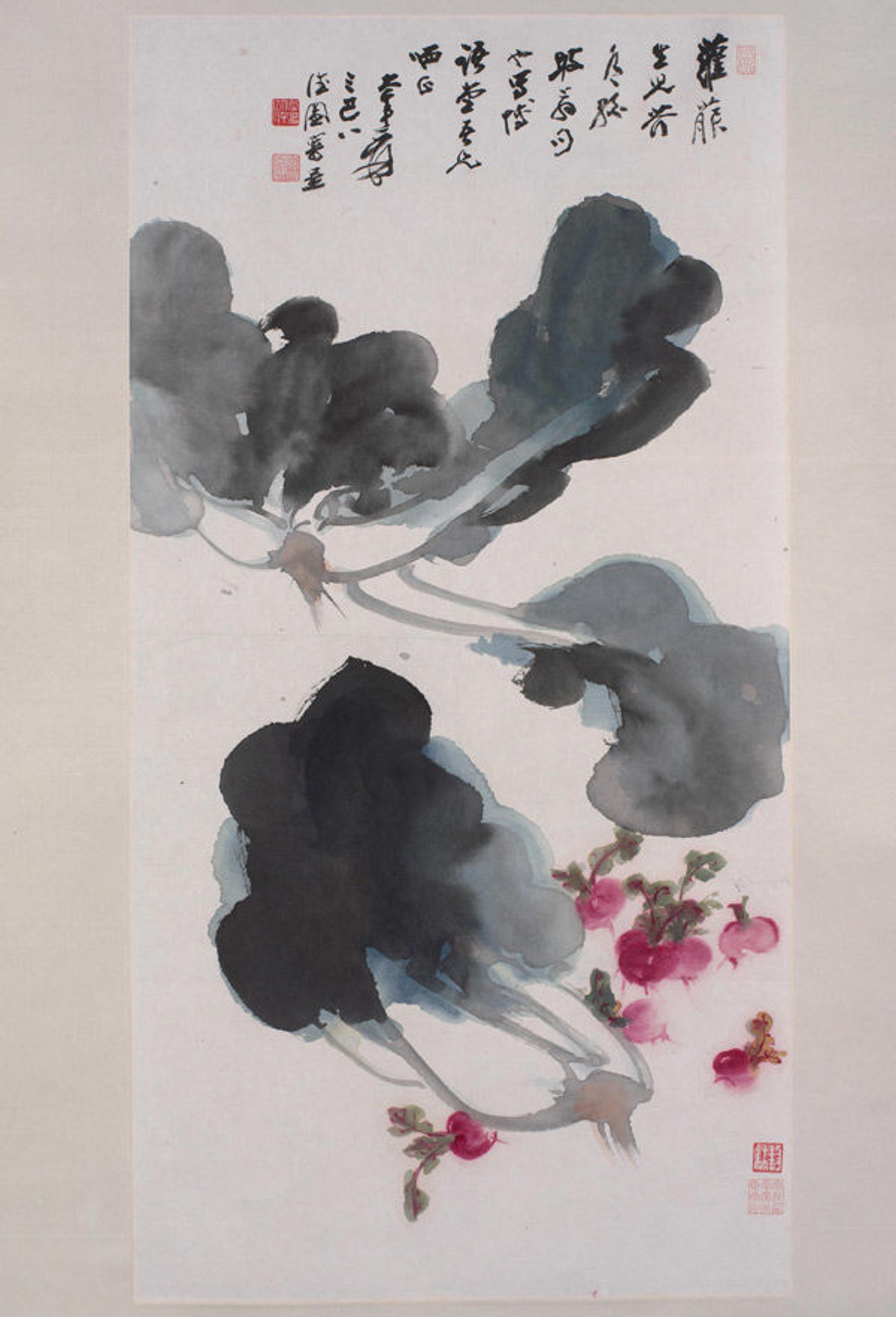
Fig. 3. Zhang Daqian (Chinese, 1899–1983). Radishes and Mustard Greens, ca. 1965. Republic period. China. Hanging scroll, ink and color on paper; 34 1/4 x 17 5/16 in. (87.0 x 44.0 cm). The Metropolitan Museum of Art, New York, The Lin Yutang Family Collection, Gift of Richard M. Lai, Jill Lai Miller, and Larry C. Y. Lai in memory of Taiyi Lin Lai, 2005 (2005.509.24)
It was around that time that Zhang presented six paintings to Lin with playful and personal inscriptions. In Radishes and Mustard Greens, for instance, the meat-loving artist extols the virtue of a vegetarian diet in self-mockery (fig. 3). Exuberant compositions of suggestive imagery in saturated ink and fresh colors represent his experiments with a "splashed-ink" technique that might be inspired in part by his exposure to Western-style abstract art (fig. 1).
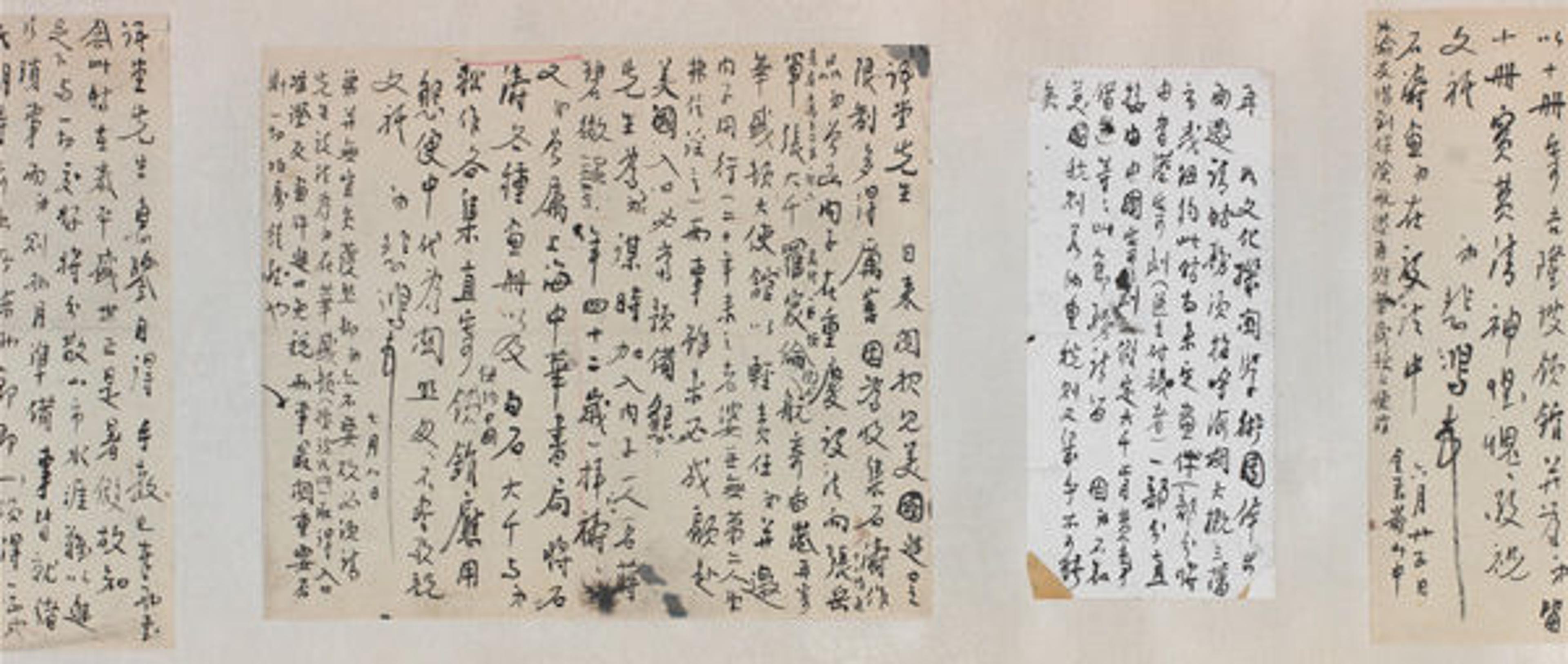
Fig. 4. Xu Beihong (1895–1953). Section of letters, nos. 4–7 from Seventeen Letters, datable to 1938–48. Handscroll, ink on paper, 12 11/16 x 365 3/8 in. (32.3 x 928.0 cm). The Metropolitan Museum of Art, The Lin Yutang Family Collection, Gift of Richard M. Lai, Jill Lai Miller, and Larry C. Y. Lai in memory of Taiyi Lin Lai (2005.509.12)
The most unusual piece in the gift is a long handscroll composed of seventeen letters that Xu Beihong (1895–1953), one of China's preeminent artists at the time, wrote to Lin Yutang (nos. 1–15, dated 1938–48) and to Lin Taiyi (nos. 16 and 17, dated 1948). Taiyi, who had developed a taste for Xu's calligraphy, collected the letters and had them mounted chronologically into a scroll in the 1980s (fig. 4). The work is a precious primary document that records the strenuous planning of a dream exhibition of contemporary Chinese art in New York that eventually fell casualty of World War II. It also relates to two such exhibitions held at the Metropolitan Museum in 1943 and 1948 that engaged Lin Yutang's participation.
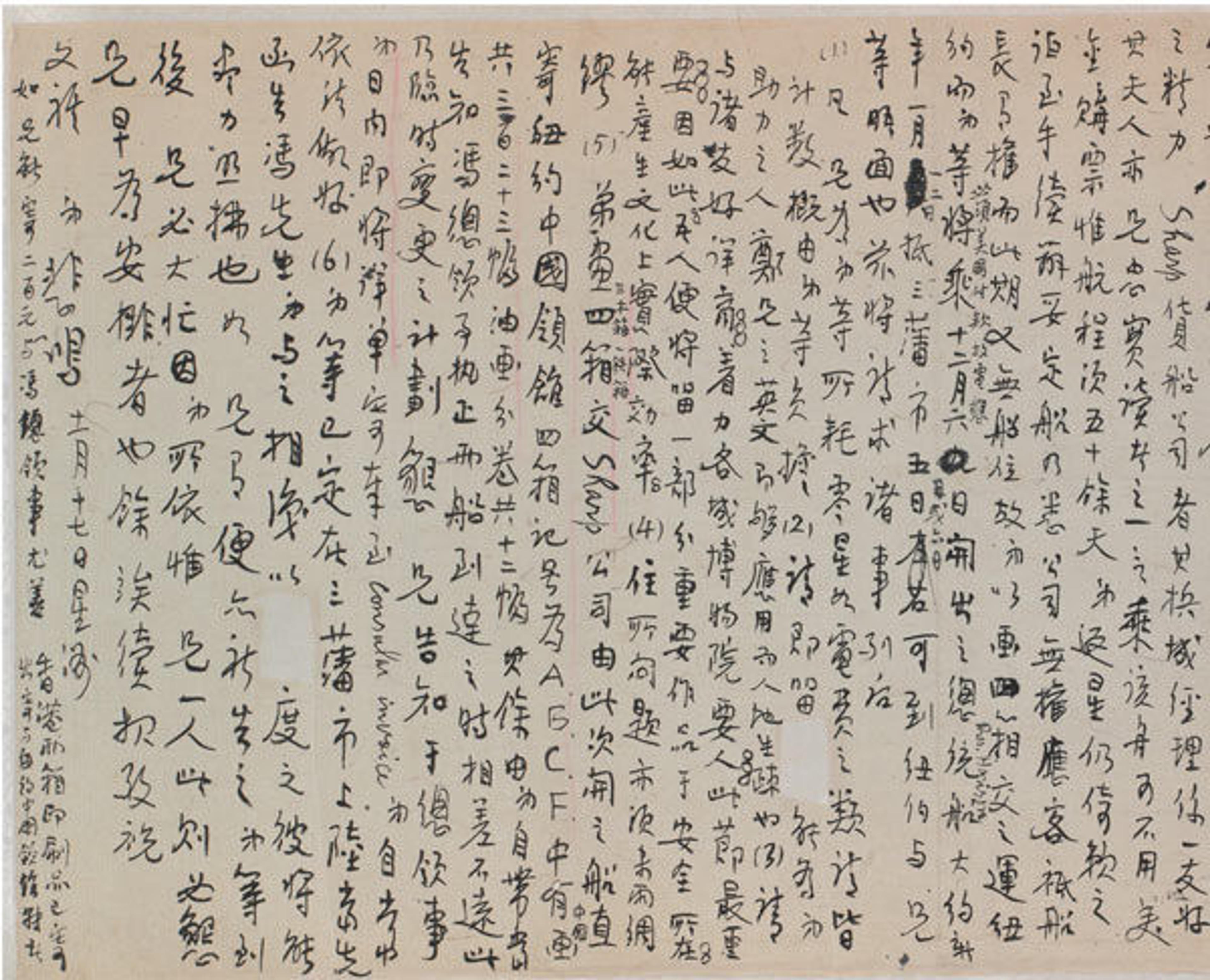
Fig. 5. Xu Beihong (1895–1953), Letter no. 11 from Seventeen Letters (detail), datable to 1938–48, handscroll, ink on paper, 12 11/16 x 365 3/8 in. (32.3 x 928.0 cm). The Metropolitan Museum of Art, New York.,The Lin Yutang Family Collection, Partial and Promised Gift of Richard M. Lai, Jill Lai Miller, and Larry C. Y. Lai in memory of Taiyi Lin Lai (2005.509.12)
After Japan's invasion of China in July 1937, Lin Yutang published an article condemning Japanese aggression in the August 29 issue of the New York Times Magazine that had a significant international impact on the conflict in Asia. Xu Beihong, on the other hand, began raising war-relief funds by holding exhibitions in India, Singapore, and Malaysia. The first eleven letters in the scroll, written between 1938 and 1941, chronicle their joint efforts, initiated by Xu in recognition of Lin's reputation in the West, to organize a touring exhibition of more than three hundred contemporary Chinese paintings and calligraphies in America to gather financial and moral support for China. In his letter dated November 17, 1941, Xu states that, having lost nearly fifteen pounds of body weight, he is finally set to sail to San Francisco on December 6 (fig. 5). The herculean project, however, did not materialize due to the Japanese attack on Pearl Harbor the next day, which disrupted transpacific traffic.
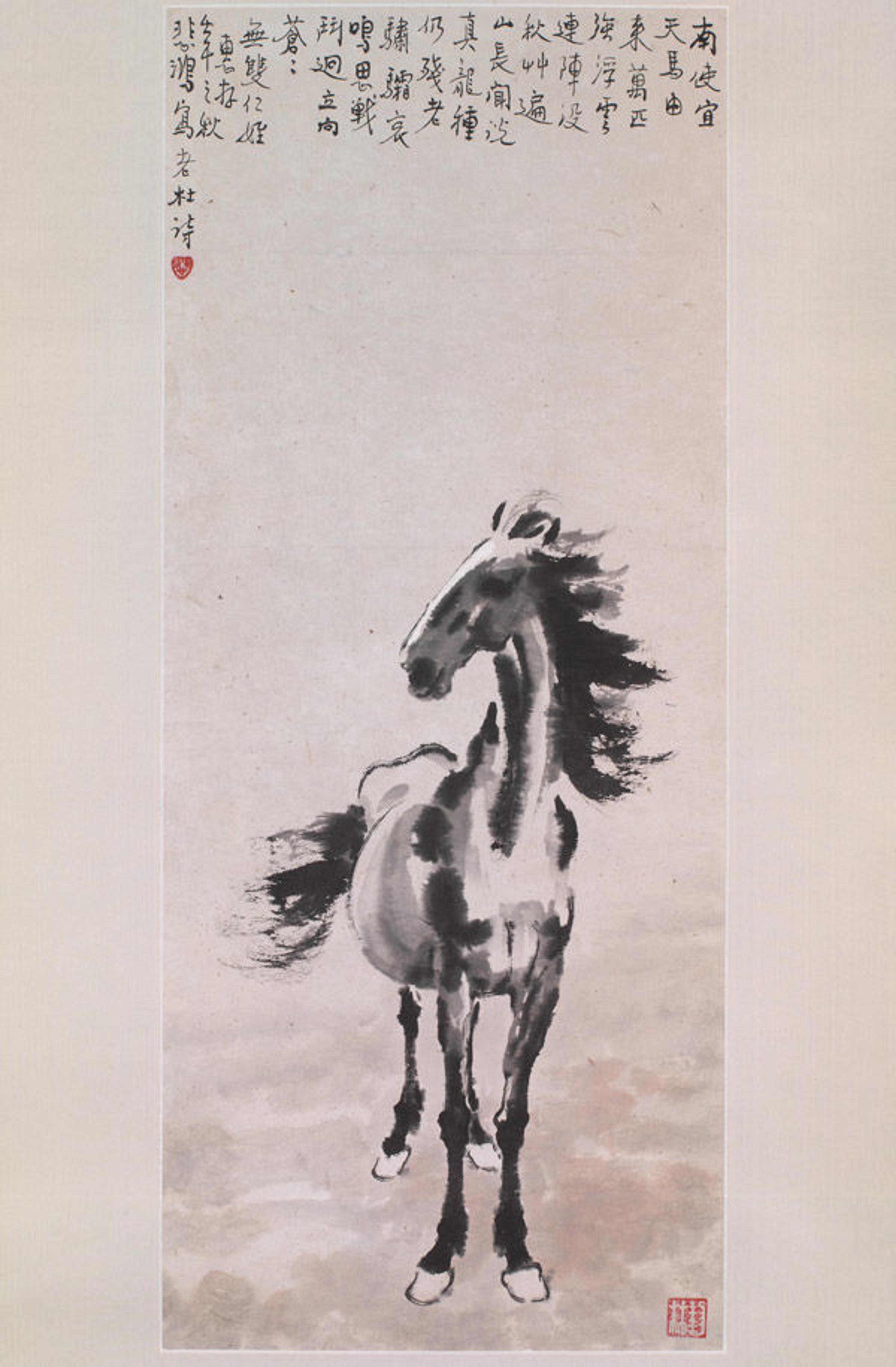
Fig. 6. Xu Beihong (Chinese, 1895–1953). Heavenly Horse, dated 1942. Republic period. China. Hanging scroll, ink on paper; Image: 26 5/8 x 11 1/8 in. (67.6 x 28.3 cm); overall with mounting: 89 x 18 1/8 in. (226.1 x 46 cm); overall with knobs: 89 x 21 in. (226.1 x 53.3 cm). The Metropolitan Museum of Art, New York, The Lin Yutang Family Collection, Gift of Richard M. Lai, Jill Lai Miller, and Larry C. Y. Lai in memory of Taiyi Lin Lai, 2005 (2005.509.15)
In the late autumn of 1942, while the war raged on, Xu Beihong selected five of his paintings to be brought to Lin Yutang to distribute as presents in New York (fig. 6). This act of self-promotion and gesture of friendship was mentioned in his calligraphic piece dedicated to Lin Taiyi (included in the gift) and later in his letter to Lin Yutang on November 5, 1942 (no. 13). In his last two letters to Lin in late 1947 and early 1948 (nos. 14 and 15), Xu solicited Lin's support for an exhibition of contemporary Chinese art organized by a friend of his to be held at the Metropolitan Museum in 1948.
Lin Yutang actively participated in the New York art world while living there, making a special effort to attend events organized by the Metropolitan Museum. He contributed a blurb to the pioneering 1940 catalogue of the Ada Small Moore collection of Chinese paintings. After the disheartening abandonment of the exhibition that he had helped coordinate with Xu Beihong in 1941, he wrote introductory remarks for the catalogues of two exhibitions of contemporary Chinese painting held at the Metropolitan Museum in 1943 and 1948, respectively. He also lent four works that Xu Beihong had presented to him and his daughter in 1942 to the 1943 exhibition. All four entered the Metropolitan's permanent collection as part of the Lin Yutang Family gift in 2005. In addition to their historical connection, this collection witnesses the Museum's early endeavor to present contemporary Chinese art to the West.
Related Link
Liu, Shi-yee. Straddling East and West: Lin Yutang, A Modern Literatus, edited by Maxwell K. Hearn. New York: Metropolitan Museum of Art, 2007.